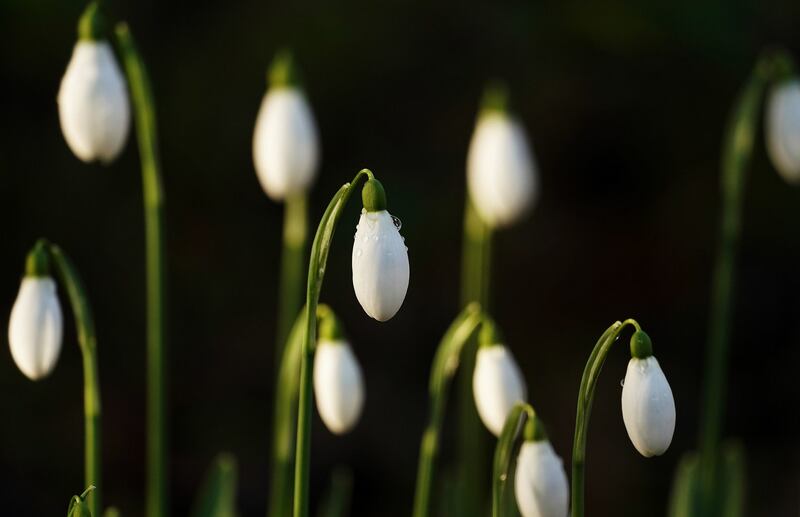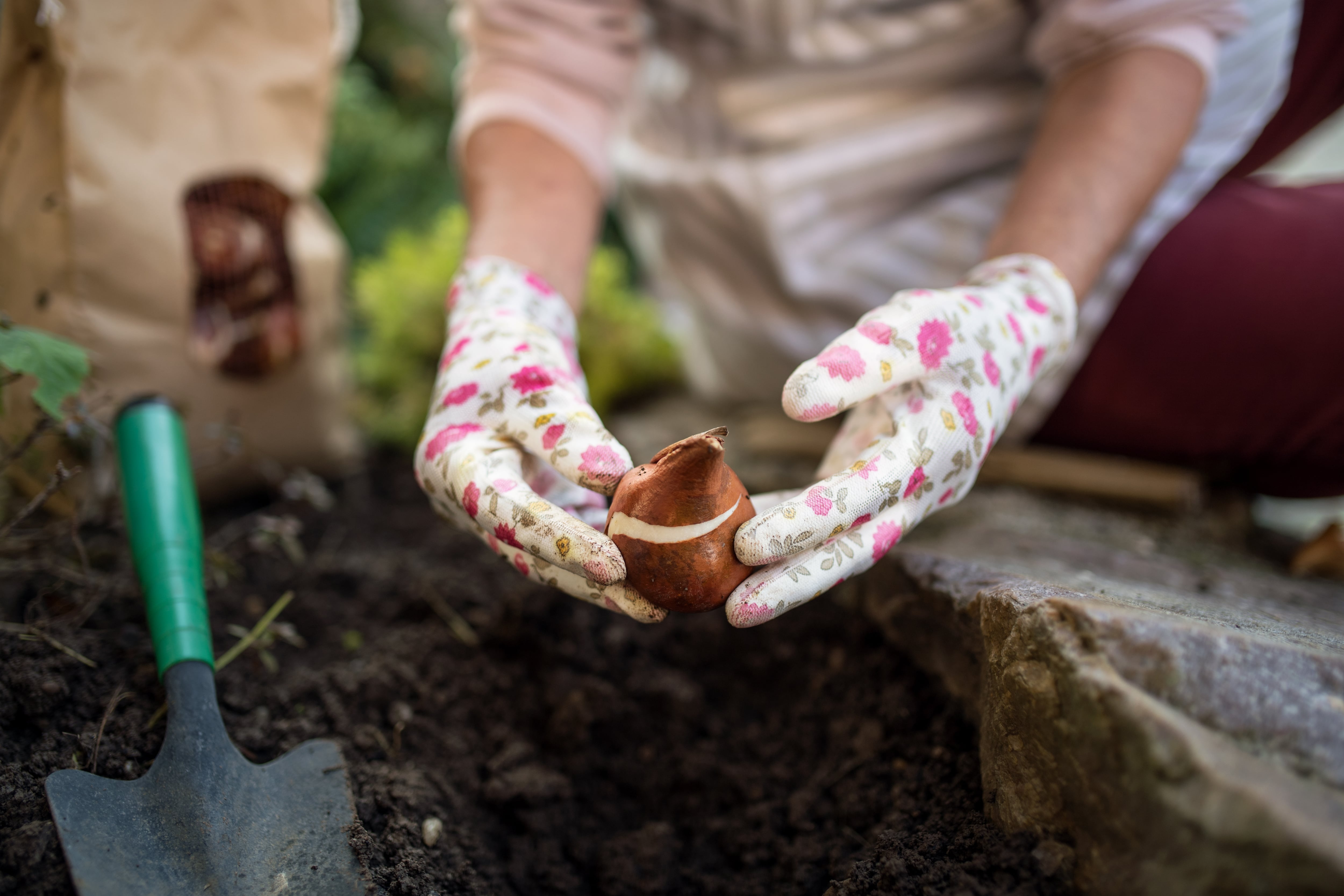I recently bought my husband a scythe. Oh, how we’d have chortled about it back in the day, and yet already it feels like the most magical of garden tools, a secret weapon against the long, coarse grass that threatened to engulf the garden’s young plants and flower beds. Super light and deadly sharp, it’s quite different to the more traditional Irish scythe my father used to cut tall grass when I was a child, a heavy beast with a strongly curving wooden shaft and a big, fierce beak of a blade. This one is Austrian-made, its much straighter, adjustable handle crafted from lightweight but resilient ash, its slender mowing blade hand-forged from steel.
Novices when it came to knowing how to expertly glide it through long grass in that all-important, very low, curling arc while keeping it lightly in contact with the ground – the scyther’s equivalent of the perfect golf swing – it took us a while to even begin to get the hang of it (thank you YouTube). Very quickly we discovered that the world of scything comes with its own lexicon, a rich vocabulary from a bygone age with old words that speak of a traditional rural way of life. Peening. Honing. Whetstone. Hafting angle. Burr. Snathe. Jig. Tang. Beard. Heel. Chine.
Mastering the perfect mowing stroke aside, we learned that keeping the scythe sharp is essential. Every five to 10 minutes you must briefly use a whetstone to hone or polish the blade, an art in itself. With more prolonged use comes the need (after about 12-15 hours of use) to peen the blade, using a special peening hammer along with a special peening jig or a miniature anvil to subtly restore the metal edge to the correct thinness. Get it wrong and you risk distorting the blade or damaging it to the point of cracking the metal. Don’t do it, however, and your scythe becomes far less effective.
All of the above, you might reasonably think, would be enough to turn most people off but not a bit of it. Instead google ‘scything’ and you’ll come across countless contemporary videos of mainly men serenely slicing their way through summer meadows where the only sound – a strangely soothing one – is the almost imperceptible swish of the blade. Almost all are using what has come to be known as the Austrian scythe, hailing from a part of the world where the tradition of scythe-making has endured. The Schröckenfux model that I bought, for example, is made at Rossleithen in a factory that has been operating for almost 500 years. This popular style of scythe aside, a few still use what’s colloquially known as the American or English scythe, a much heavier tool very close to the one my father used with a bigger, more ridged blade that’s best sharpened with a grinder.
READ MORE
Scroll down through the endless websites listed and you’ll find that there are books on scything, courses on scything and even thriving associations dedicated to the craft and art of scything, all proof that it’s enjoying a dramatic revival around the world.
Part of the reason for this, of course, is that gardeners and homesteaders are searching for more sustainable, nature-friendly ways to manage their plots. Compared with strimmers and traditional lawnmowers which greedily consume costly fossil fuels, belch out polluting fumes, typically produce enough noise (85-90 decibels) that ear protection is necessary, require the use of protective goggles and clothing and inevitably do harm to garden wildlife, a scythe is a paragon of environmental virtue.
All of which is brilliant news for the planet but still doesn’t quite fully explain the resurgence of interest in this human-powered tool. Instead the scythe’s universal appeal seems to go deeper than that, connecting us to the natural world in a way that’s hard to describe without sounding very ‘woke’ but feels almost as if it reawakens some ancient folk memory hard-wired into the human brain.
For those quietly rolling their eyes at those words, until recently I would probably have done the very same. But to spend an hour scything, I’ve discovered, is a profoundly different thing to spending an hour strimming or using a lawnmower. Instead of feeling like hard, boring labour, it’s a curiously meditative, strangely relaxing, much more thoughtful experience that swiftly tunes you out from all the noise, stress and bother of the modern world.
It’s also very satisfying in a way that strimming will never be, as well as far more effective when it comes to cutting back tall, thick, tangled wet grass and lush weeds. All that aside, for anyone cultivating a wildflower meadow rather than a neatly shaven lawn, it’s the perfect way to cut it right back in late summer. And once the ancient art of the mowing stroke is properly mastered, it’s also entirely possible to neatly cut even a conventional lawn with a scythe, if not entirely practical when it comes to postage-stamp-sized swards.
Along with various kinds and lengths of mowing blades designed to tackle grass, nettles, ferns and soft weedy growth, you can get a stouter ‘clearing’ blade designed to tackle coarser, more scrubby growth. As a rule, the shorter the blade, the less material it cuts but the easier it is to control. As for the ‘snathe’ or handle itself, this needs to be purchased with the user’s height in mind. If you’re ciotóg, then there are also models specially designed for left-handed people.
Finally, bear in mind that all that mown material can also be put to great use as a soil-boosting, weed-suppressing mulch or added to the compost heap. For the moment we’ve made ours into small haystacks, an incongruous sight in the depths of an icy Irish winter, but one that’s strangely satisfying.
This week in the garden
If/where the ground is still frozen or badly waterlogged, hold off planting bare-root plants until conditions improve to protect their vulnerable young root systems. In the meantime, store your recently purchased bare-root plants in a cool, dry but frost-free shed and with the roots wrapped in plastic/damp hessian/ an old damp towel or temporarily buried in a bag of potting compost to stop them drying out. Likewise, very young potted plants are much more vulnerable to damage from extreme cold and also need suitable protection during the kinds of very icy nights experienced recently.
January is a great time to start browsing the websites and catalogues of specialist suppliers, with a notebook and pen in hand to make a wishlist of must-varieties. But bear in mind that while the internet is a magical tool when it comes to tracking down faraway nurseries selling unusual plants, seeds and tubers, it can be easy to make the mistake of assuming that those faraway nurseries’ descriptions of a plant’s hardiness or ease of cultivation are relevant to typical Irish growing conditions, which are typically cooler and wetter than in many parts of Europe.

Dates for your diary
On Saturday, February 4th, the 2023 Snowdrop Gala will take place at Ballykealey House, Co Carlow, with lectures by Troy Scott Smith of Sissinghurst Castle and the German garden designer Iris Ney plus specialist plant sales. (€100, tickets available from Robert Miller at sales@altamontplantsales.com, 087-9822135; 2023 GLDA ‘Letting Nature In’ seminar, tickets from glda.ie (€35-€125).
















